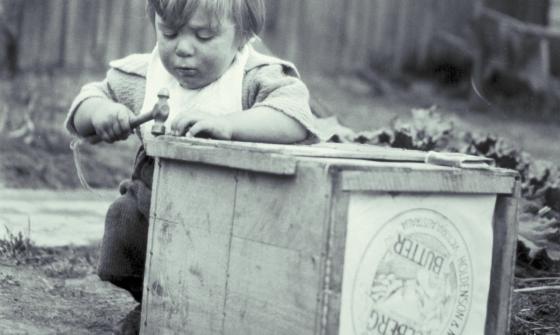Researching your family history remotely: Discovering the Library’s eResources
Curious about your family’s past? Online genealogy resources make it easier than ever to dive into your family history from the comfort of home.
Our specialist reference team has curated a handy list of freely available websites and licenced databases that you can view with a Library login. These include resources to explore Australian, Chinese-Australian and First Nations family history, as well as maps, newspapers, and biographies.
If you don’t have a Library login, join the Library to get instant entry to these valuable licenced databases via our eResources portal. Our eResources research guide explains this process.
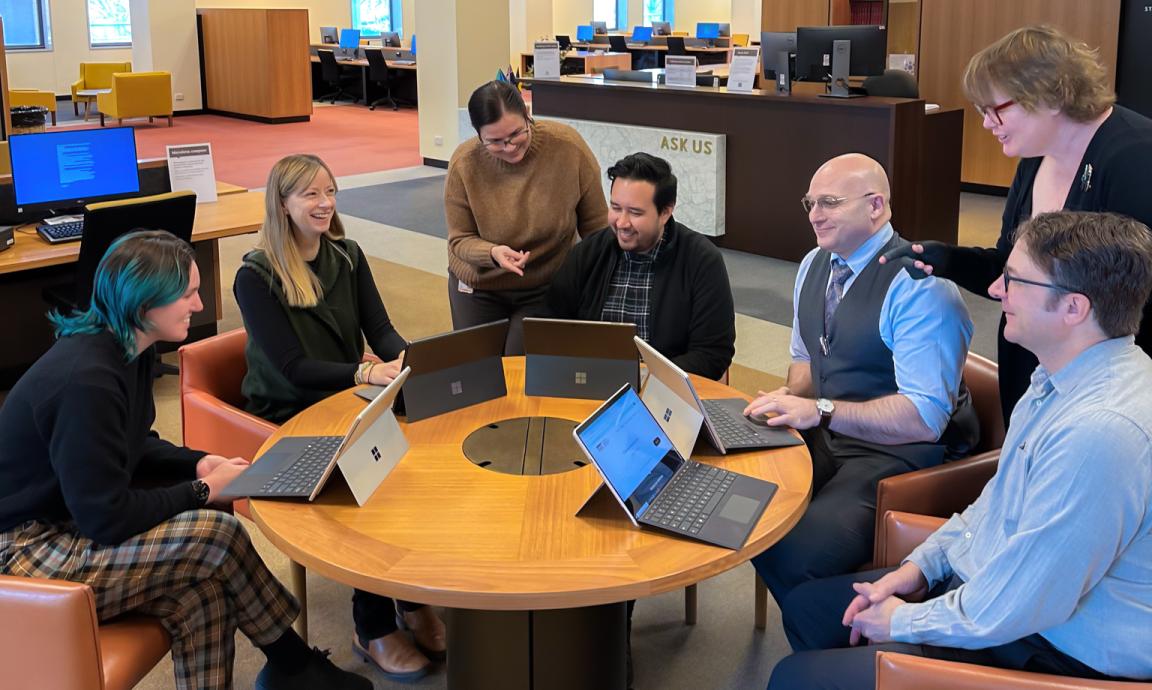
Leisa: Published Australian family histories
A great resource to uncover is the Australian family histories: a bibliography and index database, hosted on the Family History Connections website (formerly known as the Australian Institute of Genealogical Studies). This freely available database is based on Ralph Reid’s book on published Australian family histories. Search by surname to find book titles and authors, then use Trove (limit the category to Books & Libraries) to locate a nearby library that holds a copy for you to access.
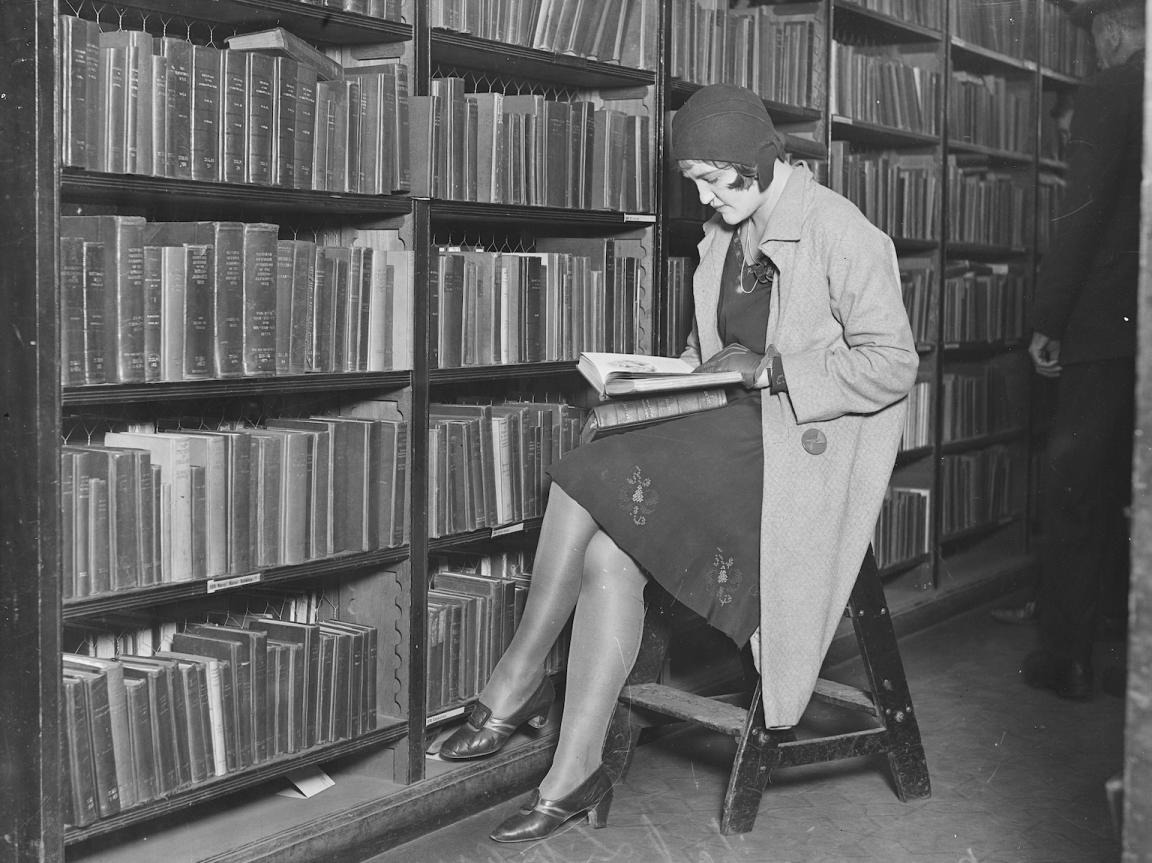
Fairfax Corporation, Woman reading in the Municipal Library, New South Wales, 20 June 1930, nla.gov.au/nla.obj-160653234
Fairfax Corporation, Woman reading in the Municipal Library, New South Wales, 20 June 1930, nla.gov.au/nla.obj-160653234
James: Pacific manuscripts
As an Asian-Pacific nation, our collection contains a vast array of materials related to Asia and the Pacific region.
The Pacific Manuscripts Bureau (PMB) provides access to archives, manuscripts and rare printed material relating to the Pacific Islands. This includes the most extensive collection of non-government primary documentation on the Pacific Islands available to researchers on microfilm held by member libraries, including the National Library.
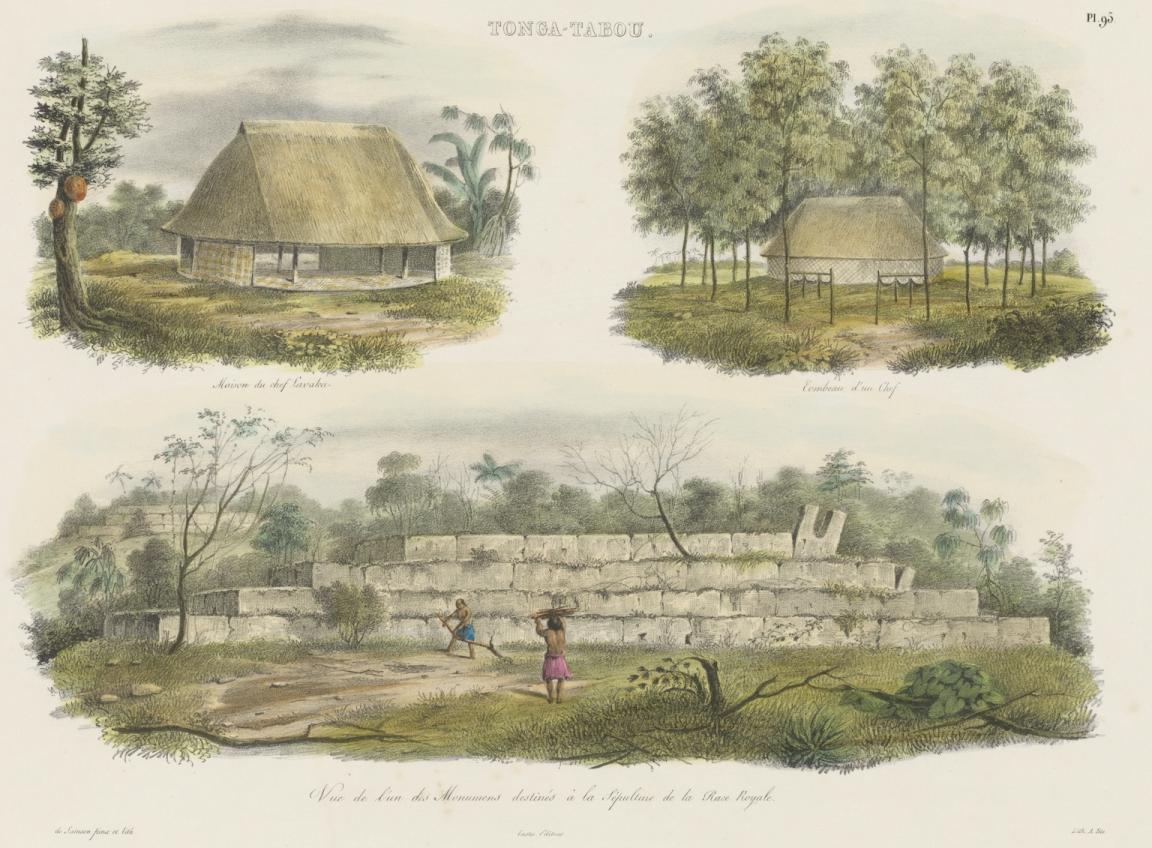
Louis Auguste de Sainson & Jules-Sébastien-César Dumont d'Urville, Maison du chef Lavaka; Tombeau d'un chef; Vue de l'un des monuments destines a la sepulture de la race royale, Tonga-Tabou, 1833, nla.gov.au/nla.obj-135797101
Louis Auguste de Sainson & Jules-Sébastien-César Dumont d'Urville, Maison du chef Lavaka; Tombeau d'un chef; Vue de l'un des monuments destines a la sepulture de la race royale, Tonga-Tabou, 1833, nla.gov.au/nla.obj-135797101
Qin Qin: Chinese-Australian naturalisation records
When exploring Chinese Australian family history, naturalisation records can be a key resource for tracing details of an immigrant ancestor's arrival and native place.
In NSW, Chinese migrants often became naturalised to secure rights such as landholding and participation in elections. With 971 entries, the Chinese Naturalisation Database for NSW (1857–1887) is a rich source of information and available via the Chinese Heritage of Australian Federation website by La Trobe University, archived in Trove.
Original naturalisation records up to 1903, along with other NSW immigration records are held at the NSW State Archives. Naturalisation records from 1904 onward are available through the National Archives.
Find more Chinese-Australian family history resources
Here is a photo of stockman, Harvey Young. Harvey’s grandfather, Percy Young, also known as Puck Sing Young, was born in China 1856, arrived in Sydney circa 1876 and was naturalized in 1883.
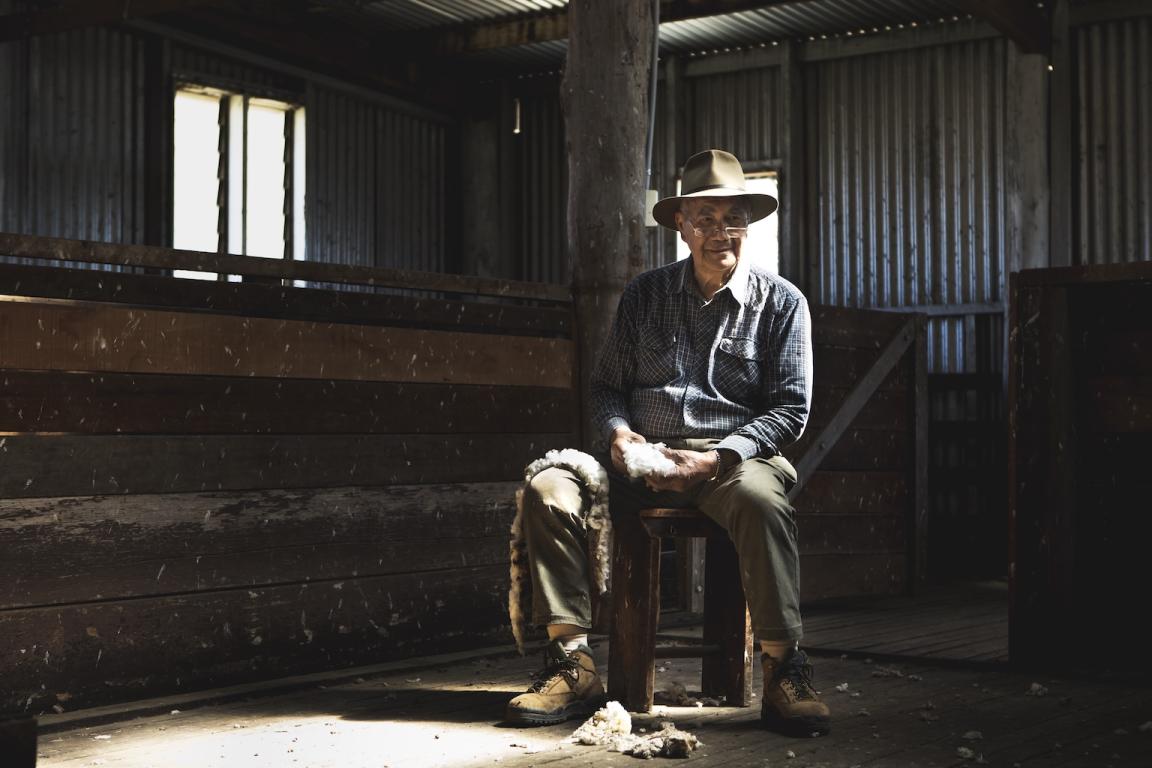
Ken Leanfore, Harvey Young in his shearing shed in Glen Innes, New England region of New South Wales, 28 September 2016, nla.gov.au/nla.obj-2975647170
Ken Leanfore, Harvey Young in his shearing shed in Glen Innes, New England region of New South Wales, 28 September 2016, nla.gov.au/nla.obj-2975647170
Rob: First Nations biographical indexes
Names are crucial for understanding and pursuing your family history, but finding those names can sometimes be tricky. It can be especially challenging for people researching their Aboriginal and Torres Strait Islander family history for a range of reasons, including record-keeping practices of the past. Spelling of names may vary across documents, they might include names in language or skin names, or be anglicised, or substituted with European names or generic nicknames. Records may be incomplete, inaccurate, or be distressing to read due to biased and offensive language.
There are a range of biographical indexes and dictionaries that may be useful for First Nations Research. The Aboriginal and Torres Strait Islander Biographical Index by AIATSIS is a great example. You can search the Index for a person's name and be shown a list of publications which mention the person you are researching. You can use that information to identify published and unpublished materials that mention your ancestor.
Find more in our First Australians family history research guide
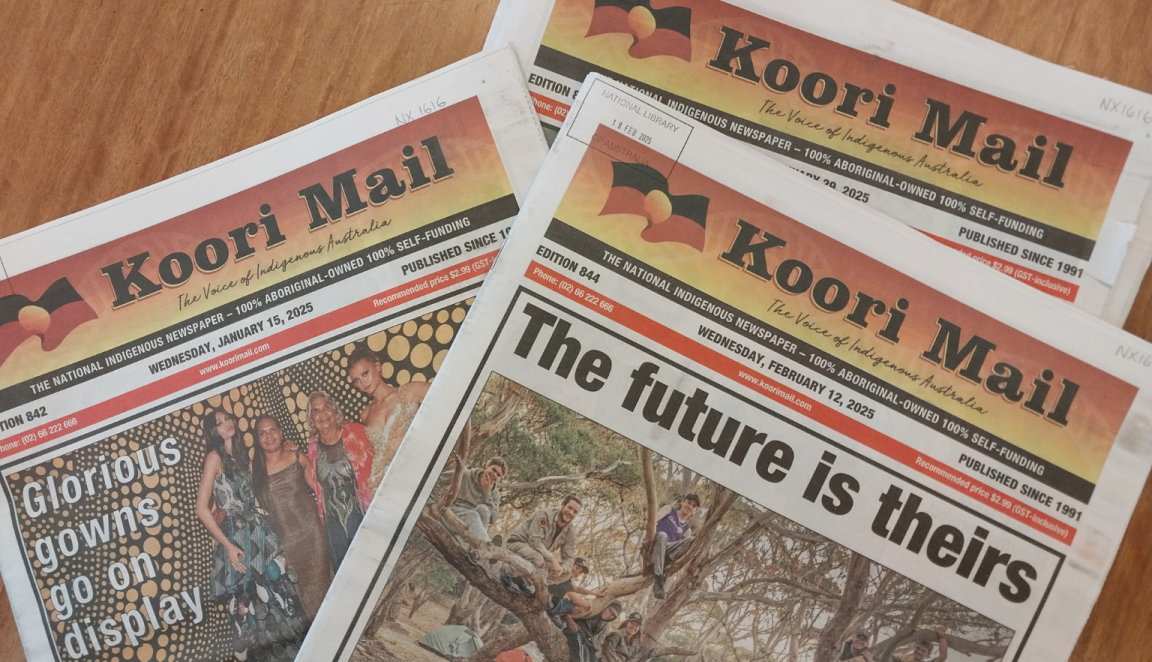
Koori mail : the fortnightly national Aboriginal and Torres Strait Islander newspaper, 2025, nla.gov.au/nla.cat-vn1559512
Koori mail : the fortnightly national Aboriginal and Torres Strait Islander newspaper, 2025, nla.gov.au/nla.cat-vn1559512
Jane: Australian newspapers
The trickiest period for accessing newspapers online is between 1954 (a common cut off for copyright reasons) and the early 2000s, before newspapers became born digital. When you’re researching within this period one option is to use your Library login to access eResources like The Sydney Morning Herald Archives 1955-1995, The Sydney Morning Herald library edition and The Age library edition.
Major Australian newspapers are also available on NewsBank in text or image format. To view death notices or classifieds, you'll need to look for the image format newspapers using the 'A-Z Source List' search option.
Another excellent option is the Ryerson Index, the free online index to Australian obituaries, funeral and probate notices, to help find when and where a notice has been published.
Delve into our Australian newspapers research guide for more
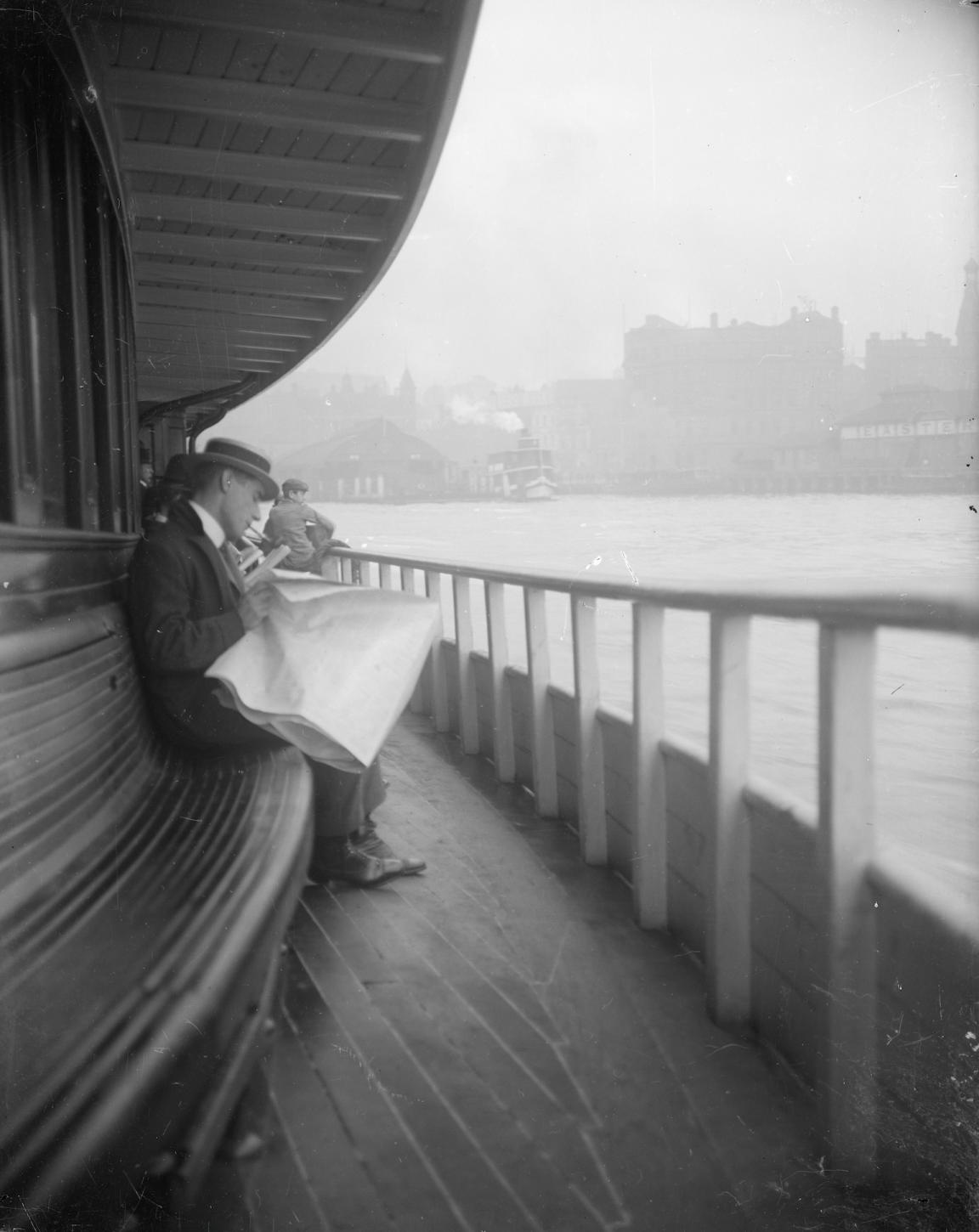
Harold Cazneaux, Man reading newspaper on deck of ferry approaching Circular Quay, [N.S.W.], 1906, nla.gov.au/nla.obj-140214251
Harold Cazneaux, Man reading newspaper on deck of ferry approaching Circular Quay, [N.S.W.], 1906, nla.gov.au/nla.obj-140214251
Nat: Overseas newspapers
Access to newspapers from the United Kingdom can be found in Gale NewsVault. Among its publications is The Times, which is rich with obituaries, announcements, and everyday life stories that paint vivid portraits of the past.
If your roots trace to Ireland, the Irish Newspaper Archive is an invaluable resource for discovering birth, marriage, and death notices.
For broader searches, Google News Archive opens the door to historic papers around the globe.
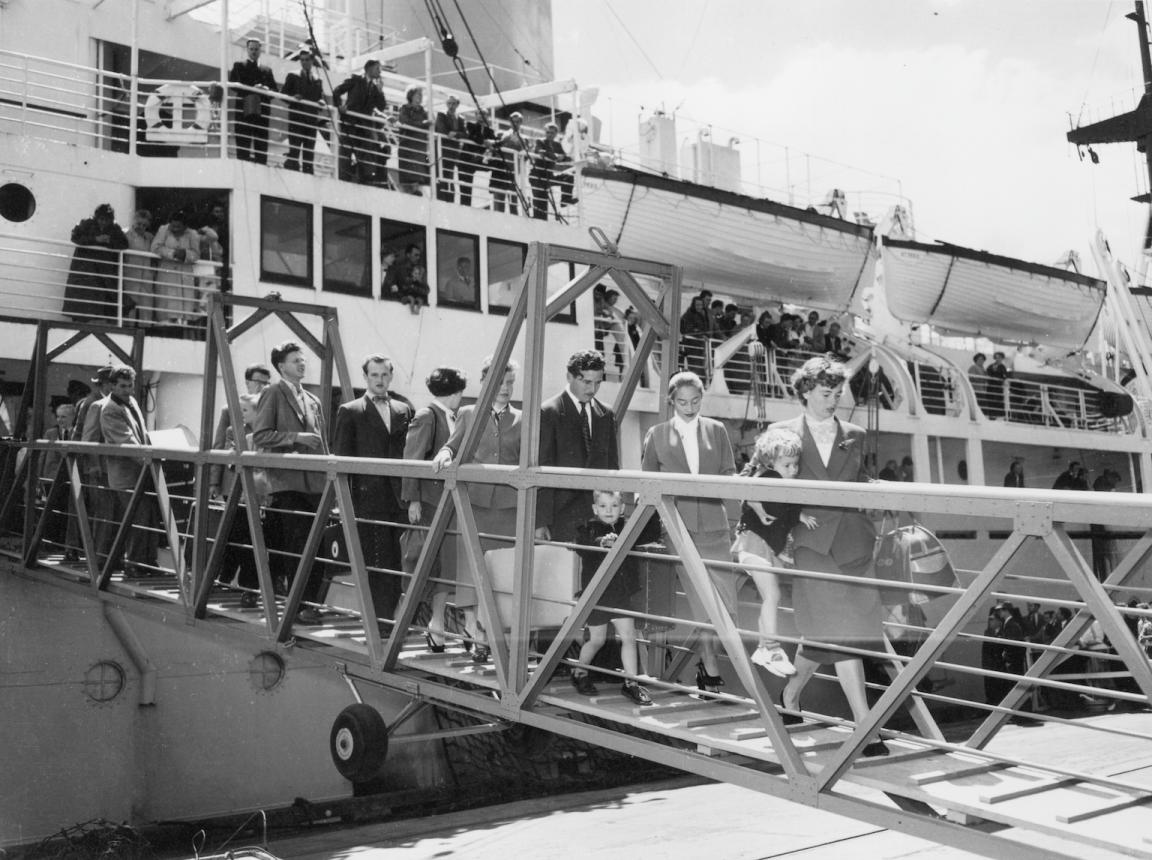
Australian News and Information Bureau, Migrants arriving at an Australian port, 1964, nla.gov.au/nla.obj-136962201
Australian News and Information Bureau, Migrants arriving at an Australian port, 1964, nla.gov.au/nla.obj-136962201
Damian: Maps
Maps can tell a family history story by showing when and where your ancestors lived. A key type of map to consider is cadastral maps, which show land ownership and property names.
We hold cadastral maps from around Australia, and many of these are digitised and viewable online. Some of these maps are included in our Map Search database which overlays the digitised historical map on a current map base to see the old and new together. On a catalogue record for a map, look for the ‘View this map in Map Search’ link and follow it to see that map.
More extensive digitised cadastral map collections can be seen on some state government websites, such as the NSW Historical Land Record Viewer and Public Records Office Victoria Map Warper which have comprehensive archived collections of land ownership maps.
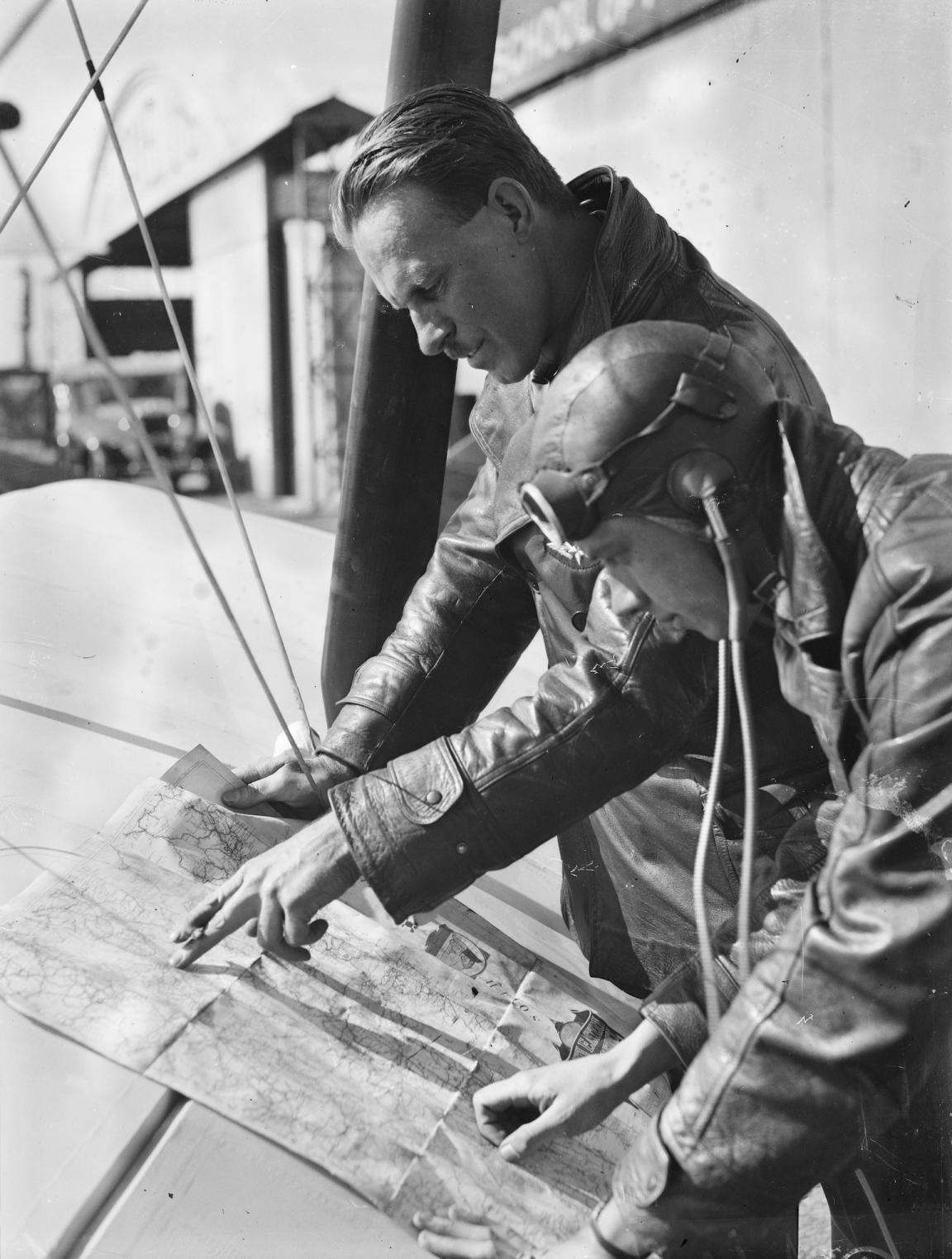
Fairfax Corporation, Frank Follett and H.T. Hammond examining a map, New South Wales, 22 August 1930, nla.gov.au/nla.obj-161963123
Fairfax Corporation, Frank Follett and H.T. Hammond examining a map, New South Wales, 22 August 1930, nla.gov.au/nla.obj-161963123
Sarah: Biographies
Biographies help us to walk a mile in another person's shoes and to glimpse the broader life experiences of our ancestors and the time that they lived. They can offer us insights into personality, character, attitudes, or impact on their community and broader society.
The Oxford Dictionary of National Biography is available for access with your Library login and offers a glimpse into the lives of the peoples of the British Isles and their connections overseas.
Closer to home, Who's Who in Australia, Who's Who in Business in Australia and Who's Who of Australian Women are superlative guides to prominent Australians from a wide range of fields, including business, politics, the arts, sports and more.
Trove: People and organisations is another way of finding information about prominent Australian people and organisations. This search draws on sources such as the Australian Dictionary of Biography, Australian Women’s Register, Dictionary of Australian Artists Online and Encyclopedia of Australian Science.
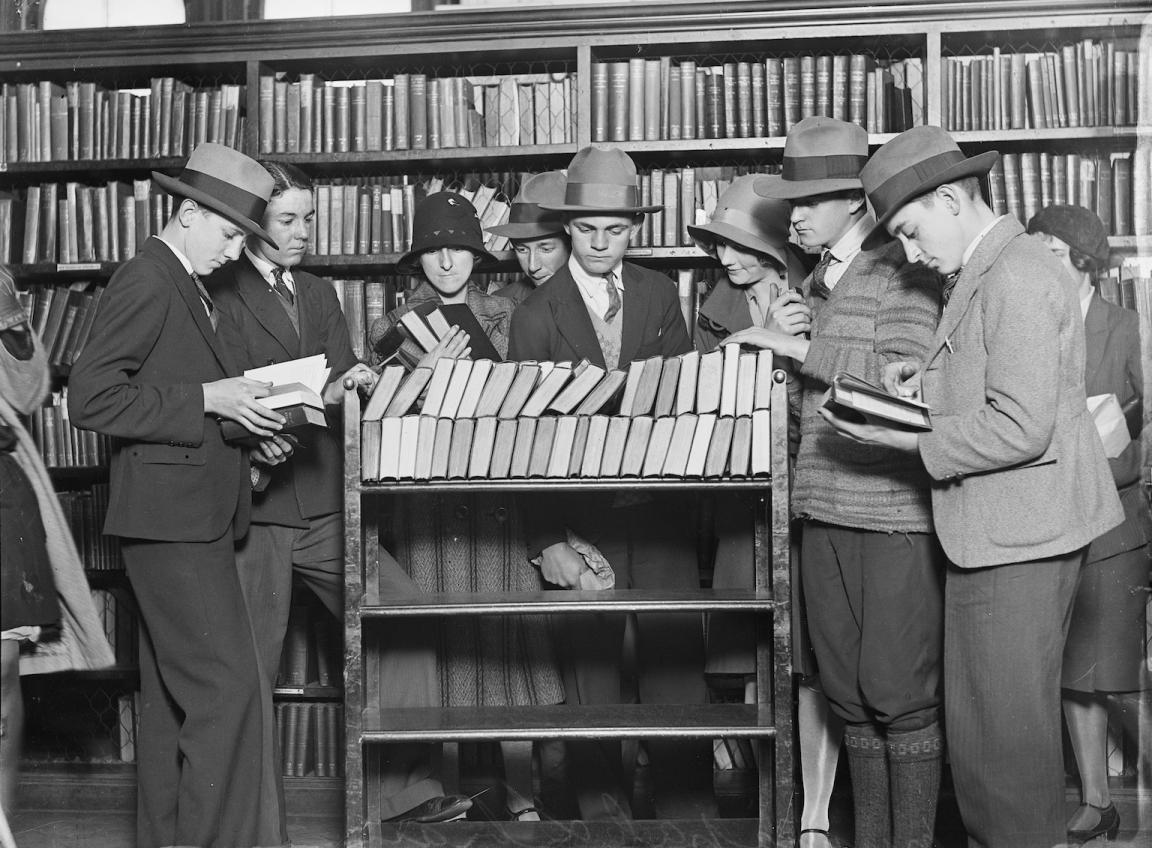
Fairfax Corporation, Group of men and women gathered around a trolley full of books at the Municipal Library, New South Wales, 20 June 1930, nla.gov.au/nla.obj-160503553
Fairfax Corporation, Group of men and women gathered around a trolley full of books at the Municipal Library, New South Wales, 20 June 1930, nla.gov.au/nla.obj-160503553
See what else is out there
Find more resources to help you throughout your family history research jouney with our full range of research guides.
Translating
Need to talk to one of our Reference Librarians in a language other than English? We now offer a Translating and Interpreting Service (TIS) for non-English speakers through our Ask a Librarian phone service.
